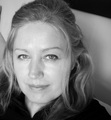Collette O'Mahony's Blog, page 2
April 14, 2024
Objectivity and Subjectivity.
Objectivity is based on realism, it is an unbiased, balanced observation based on verifiable fact. Subjectivity is based on opinion, it is assumption, interpreted without verifiable facts. Objectivity is the perception of external matters; subjectivity is the perception of internal matters. Subjectivity and objectivity co-exist in us and both are necessary pathways to inner and outer awareness. We require a doctor’s unbiased diagnosis, however, their prescriptive treatment may be both objective (based on factual research) and subjective (based on personal/professional experience).
When we are in the throes of a difficult life transition, we want someone to listen to us. If we are not heard on a personal level, our whirlwind of thought and emotion creates a loop of frenetic and agitated behaviour, which in turn leads to anxiety and other mental health issues. We need to look at mental health in a new and productive way, we mustn’t wait until there is a build-up of emotional pain or psychological incapacity before we approach self-help and therapy. We need to recognise the difference between subjectivity and reality, the difference between opinion and fact. Long held beliefs based on childhood conditioning can easily be mistaken for the truth, just as self-talk is confused with true self. We must sift through the subconscious to find the knots that tie us to outdated modes of thinking; conditioned beliefs that no longer serve our best interest.
 Image: Brooke Shaden Photography
Image: Brooke Shaden PhotographyWe need to look at the facts before forming an opinion as opposed to forming an opinion then looking for facts to support it, while ignoring any facts that contradict our set opinion. Often in life we will clash with someone who has a differing opinion to our own. We are quick to point out the holes in someone else’s opinion but not so eager to examine our own. We tend to align ourselves with people who share our beliefs and think like we do but it doesn’t necessarily follow that we will have the same opinions. Trying to convince someone that they are wrong is futile, instead provide them with the facts and let them come to their own conclusion. The same approach applies to ourselves. If we are entrenched in a particular belief, we must look at the source of that belief and how it underpins our identity. Subjectivity is often based on conditioned beliefs and it requires a shift in attitude and behaviour to allow objectivity to surface. When we cling to a subjective belief, it becomes necessary to our identity, even if that opinion causes us anxiety. We cling to the crumbling ruin of our subconscious beliefs rather than build solid foundations based on realism and objectivity. If we believe the moon is made of cheese, we will avoid any evidence to the contrary because doing so will destabilise our identity. Even if our reasoning is corrupt, we forge ahead with arguments based on hyperbole rather than fact so that we can substantiate our fragile ego. Rather that debate opinion, the mature approach is to sift fact from fiction. If the debate is based on reason and logic, then it is easy to examine the facts. If an argument is based on differing opinions the mature approach is to agree to differ. It is futile to debate whether the moon is made of Wensleydale or Cheddar. We require objectivity for reasoning and critical thinking, subjectivity helps with context and experience.
From my upcoming book – A Compass or Change. For one to one counselling appointments on Zoom contact me here:
Collette O’Mahony 14/04/2024
(info@colletteomahony.com)
March 14, 2024
Self-Care
Self-care is our way of prioritising mental, physical and emotional wellness. It can help manage symptoms of stress and anxiety, contributing to our overall well-being. Self-care is the act of caring for ourselves and making a conscious effort to do things we enjoy and that we will benefit from. It’s about being aware of our health, identifying our needs, and taking steps to meet them.
It may sound simple, given that we shower, dress and eat our meals on a daily basis. But self-care is more than taking care of our basic needs in a hurried or frenzied manner while we rush to the next task. We have to listen to our body to truly understand its needs. Keeping busy and socialising may work for some people, but others may benefit from some alone time. Prioritising our mental and emotional health is a priority, all well-being proceeds from here. As the flight attendant tells us in the airline’s ‘case of emergency’ talk before take-off, be sure to put on your own oxygen mask first before seeing to others. This applies to energy also; tap into your own energy source daily to recharge your system. Otherwise, you run the risk of absorbing energy from those around you.
The exchange of energy between people is a secondary supply at best, and is on a lower vibration than source energy. When we interact with people in a passive-aggressive, defensive or a fearful way, we are opening our energy field to negative influences. We run the risk of vibrating at a lower frequency and begin to feel tired, stressed and anxious. To combat this low frequency energy exchange, we must tap into our own source of energy on a daily basis. By practicing mindfulness, we can tap into the energy source at the core of our being. This not only has a calming and uplifting effect but it also helps to set strong boundaries, this will ensure we don’t absorb other people’s negative energy and they are unable to take our source energy through their behaviour and role play.

Keep a self-care journal. Note at least 3 things you did to contribute to your own well-being; such as a walk in nature, a relaxing bath, and 30 minutes of mindfulness. Find things to be grateful for, write them down. Sometimes, when we are at a low-ebb it is difficult to find things to be grateful for, but if you can open your eyes in the morning, walk the dog, see beauty in your surroundings then there are things to be grateful for. Gratitude ignites well-being, with this constant attitude you can transform your life.
I have listed below some essential actions toward well-being and self-care. You may add other things that benefit you such as reading, listening to music, stroking your pet or just sitting quietly with a cup of coffee.
1. Mindfulness.
Mindfulness is the practice of purposely focusing your attention on the present moment, and accepting it without judgment. Mindfulness has been scientifically proven to be a key element in stress reduction and overall happiness. Take at least 10 -15 minutes morning and evening to sit quietly. Make sure your phone is turned off or out of reach. Begin by taking 3 deep breaths, slowly breathing in and slowly releasing. Continue to focus on the breath until you become aware of the breathing process as a natural phenomenon. Your mind will run mental checklists and try to push you into the past or drag you into the future. Rather than resisting, or acting on thoughts, allow them to be there, almost like an overcast sky. Return your focus to the breath by inhaling and exhaling deeply a number of times. Eventually, thoughts will drift off if as you continue your commitment to the present moment.
2. Downtime.
Relaxation can give you some much-needed quiet time. It’s often the only time you can hear your own thoughts and reflect on your feelings. You may know what helps you to relax, like sitting down with a cup of tea and your favourite book, going for a dog walk, or having a long, warm bath. It’s important to schedule some downtime, making time to fully switch is beneficial for your mental and emotional wellbeing.
3. Set boundaries
It is important to know it’s not selfish to say no to someone, in fact sometimes it is necessary. Learning to say no without guilt can be empowering. Setting boundaries like this can give you the time and energy you need to rest, recharge and replenish your energy so you can also care for loved ones and family. Saying no isn’t always easy, you may worry you are letting someone down. But an important part of self-care is knowing when to step back and when to reach out for help. Counselling can help you work through these difficulties, teaching you how to set healthy boundaries and know when your mind and body need a break.
4. Physical Health.
Your physical health is as important as mental health, and the work hand-in-hand. Incorporating self-care into your lifestyle requires you to look into food nourishment, physical activity and sleeping habits. When we’re swamped with work and family duties, your physical health can often be the first to dwindle. Make sure you’re getting enough sleep. If you’re going through a difficult time, sleep gives your body the chance to rest and your mind the time to process your day. What and when you eat can also affect how you feel and how you sleep.
5. Talking about your situation.
If you’re finding it hard to cope, talking to others can offer a sense of relief. Sometimes, we can be surrounded by people but we may feel very alone. There are people who care about you and support is available. Perhaps ask a friend to join you on a walk and ask if they could just listen to you talk rather than offering solutions. Part of self-care is not allowing yourself to go through the journey alone, there are several charitable foundations that offer group and one-to-one support. Self-care is about you and your health and there are times in life that we all need support. Never, underestimate the power of talking and listening, knowing that we matter is essential to our wellbeing.
While self-care is about caring for yourself, seeking and accepting help when it’s needed is a big part of self-management. If you’re stressed, feeling low or having difficulty coping day to day, going through it alone makes the journey all the more difficult. Counselling can help you understand how vital it is to take care of yourself. A counsellor can help you learn how to cope with your emotional stressors and behavioural issues leading to a greater understanding of yourself and those around you. Putting yourself first, contrary to social beliefs, is the single most important step you will ever take towards self-care and continued well-being.
Collette O’Mahony.
March 2024.
If you want to get in touch about online counselling (zoom) you can contact me at info@colletteomahony.com.
March 9, 2024
Change and Direction.
One thing to remember when navigating change that it is not a search for something. The seeds of change are already within us, our journey is a measure of distance between germination and fruition. We are born innocent but the seeds of wisdom are within us. Perhaps, we may lose our innocence on the path to wisdom, but the route from one to the other is the journey of a lifetime. We are precariously perched on wings of hope and destiny, desperately trying not to fall into oblivion. But stronger wings grow from self-love and inner-strength, wings that lift us above fear and failure. These are the wings of Gratitude and Trust.
Our world cannot change by intentions alone. The behaviour and actions we take on our journey of change is reflected in each step along the way. Some parts may be pleasurable, others we take a much needed rest. There may be roadblocks and obstacles along our path, emotions like thunderstorms will rain down upon us to clear the way. Life will deliver the perfect conditions to support and nurture our growth. Pay close attention to conversations, reactions and habits, they hold clues to our unconscious patterns. Be especially vigilant when triggers are pushed, and the cause of it. It is easier to see faults and failings in others than in ourselves; there is an adage in terms of healing that ‘if you spot it you got it.’ We can turn this reflection to our advantage by making a note of what we resist. Our emotions charge our thoughts, our thoughts inform our behaviour, and behaviour creates character. We need to look at our character from an objective place, as an amalgamation of thoughts, emotions and behaviours. All these elements are interchangeable and fluid, it is our refusal to shift perspective that makes the character feel compacted and frozen in time. Real change is never outside of us, it is within. This requires our emotions to flow freely, our behaviour to be malleable and our thoughts to rise like vapour above the limitations of majority thinking.

The infinite in us is aware of the finite span of human life. Change and impermanence walk side by side on the road of mortality. Yesterday is consigned to memory and today is the genesis for tomorrow’s attainment. The illusion that things stay the same is down to the same images playing over and over in our mind. Change is certain and impermanence a given. Life by its very nature plants a seed, roots, germinates, grows, blossoms and bears fruit. The fruit contains the seed of new life and the cycle of life continues again.
Collette O’Mahony 09/03/2024
Extract from my upcoming book – A Compass or Change – available May/June.
February 23, 2024
Creativity and Procrastination
Many a creative seed has been choked by neglect. The reason for neglect is procrastination and a certainty that the idea will amount to nothing. We are not just discussing creativity that has given us masterpieces like Da Vinci’s Mona Lisa, the Pyramids of Egypt, or Michelangelo’s David We are looking to create our own masterpiece to realise our true potential. We all receive creative impulses from time to time, directing these ideas require generativity.
Procrastination leads to stagnation. In his Eight stages of Development, Erik Erikson seventh stage is Generativity Vs Stagnation. Generativity involves concern for others and the desire to contribute to our world and future generations This can be achieved in a myriad of ways unique to the individual, whether through creative output, parenting or mentoring, they have a strong sense of adding value to society. Stagnation comes from feeling unproductive and uninvolved, leading to self-absorption, lack of growth and entrapment. According to Erikson, successfully navigating this stage develops a virtue of care. When we develop this virtue we feel a sense of contribution to the world, typically through family, work, and creative output. We feel unproductive by failing to find a meaningful way to contribute to the world. This leads to stagnation and a feeling of disconnect, uninvolved with our communities and society as a whole. Success in phase seven of Erikson’s timeline leads to feelings of usefulness and accomplishment, while failure results in shallow involvement in the world.
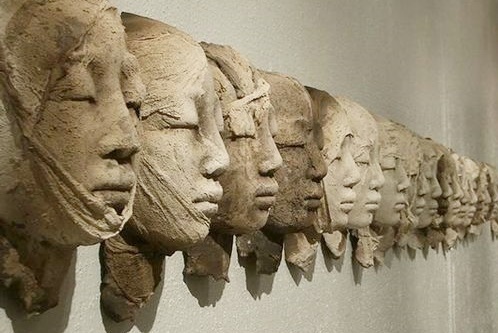
Procrastination has long been part of human behaviour predating the internet and the lure of scrolling. Procrastination is often a combination of fear of failure and sticking to a tried and tested formula. Anything that requires moving outside evidential experience is discarded as a flight of fancy to someone with fixed behaviour patterns. To move beyond this restricted point of view, we need to invoke a feeling of trust. Acting on a creative impulse requires determination to see it through even if we don’t know what the outcome will be. It requires trust that if our inner-directive has given us the impulse, it has also provided the energy to bring it to fruition. We can’t always see the outcome but we learn to trust the process. The suppressed energy that supplies the separate-self on an individual level, congeals to create a mass belief system among populations. Majority thinking is a mirror that reflects limitation, and it strengthens a resolve to stick to only what is tried and tested. But the limits of evidence are not the limits of imagination. Michelangelo is reputed to have said that every block of stone has a statue inside it, it is the task of the sculptor to discover it. We are the sculptors and our lives are the marble, our true face is waiting to emerge. But if we approach the marble from majority thinking, we will be just another featureless face on the frieze of humanity.
Collette O’Mahony 23/02/2024
An extract from my upcoming guidebook ‘A Compass for Change’ . Available next May/June.
For online counselling appointments please visit my Psychotherapy Page http://www.colletteomahony.com/counselling – or – email info@colletteomahony.com
February 16, 2024
Responsibility and Freedom
When we accept responsibility for our thoughts and actions, we set off a chain reaction. We are declaring to the universal mind that we are willing to accept our faults and rejoice in our triumphs. If something goes awry we look to ourselves for the problem rather than blaming others, therefore we give out the message that if we own the problem, we also own the solution. If we hold someone else responsible for a problem, we then depend on them for a solution. The former is energy giving, the latter energy draining. By taking responsibility for a problem we are open to finding solutions that will bring peace of mind, by blaming others we are igniting worry and doubt because energetically we are saying that we have no control over the situation. The road to responsibility may be a long one for those who never learned it as a child or young adult. This is not responsibility for younger siblings, chores or homework; it is self-responsibility, knowing right from wrong and owning our faults as well as accepting compliments in equal measure. Extreme behaviour comes from a lack of measured response to a situation, it is viewing a thing from emotional reaction rather than rational thought. Learning to channel our emotions in an appropriate way avoids their escape in a heightened situation which may lead to quarrel and dispute. This can lead to a disproportionate response to something that is triggered by suppressed emotions.
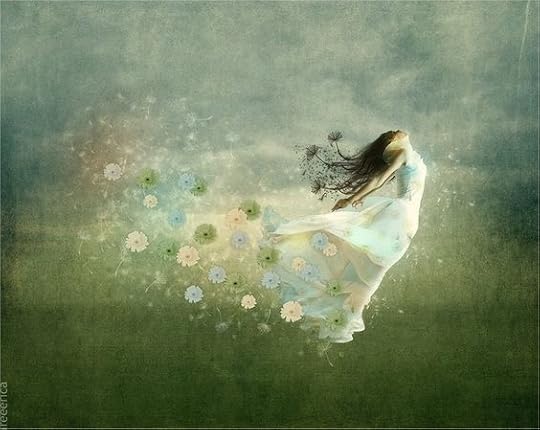
By using our inner-directive, we have a compass to guide us through change. When the mind slows down, the heart opens and everything becomes clear. Disturbance in our minds and turbulence in our heart obscures our inner-directive and we cannot tell in what direction we must proceed. Our true self is the unhindered, unblemished potential that came into the world. True self is deeper than flesh, it is a wholesome nourishment in the seed of the individual, propagated by truth and nature. A soul on fire, brave and true, breaks through the tough shell of mental inertia to become the exact fruit of its original design. We do not go in search of our true self, it is already with us, healing work is tending to the seed, encouraging it to germinate and cast off the husk of conditioning and unconscious beliefs. Taking responsibility is an important step towards realising our true potential. We must hold ourselves accountable for our thoughts, words and actions, which negatively impact on others, and on ourselves. Every damning word of our inner-critic, toward ourselves or others, shrinks the fulfilment of potential. The seed of potential must be nourished by daily mindfulness to expand awareness.
Collette O’Mahony 16/02/2023
extract from A Compass for Change
February 10, 2024
Navigating Change
An extract from my upcoming guidebook – A Compass for Change.
When something cataclysmic occurs it has a direct effect on our mental health. This may be a gradual cause like separation and divorce, or an unexpected cause such as sudden death. The cause is the event, the effect is the feelings of loss and grief. We cannot undo the event no matter how much we may wish to but we can gradually process our feelings by giving them our attention. The effect of a job loss may shake our confidence and lead to financial uncertainty, on the other hand it may lead to better opportunities and increased salary. Preparation is the key to success in most fields of endeavour, it is similar for good mental health. Most people face a crisis when unwanted change is forced upon them through tragic or unavoidable circumstance. Similarly, those who try to avoid change reach a point where their health suffers due to a clash between their conditioned mind and their inner directive. The conditioned mind functions on schemas, the parameters laid down by learned habits, beliefs and structure. It arises from childhood and is influenced by family structure, schooling, regional and national thinking. On the other hand, the inner directive is our intuition, that which says something is wrong even if others try to convince you otherwise. Too often we allow ourselves to be swayed by what people think of us, or the mood of the collective.
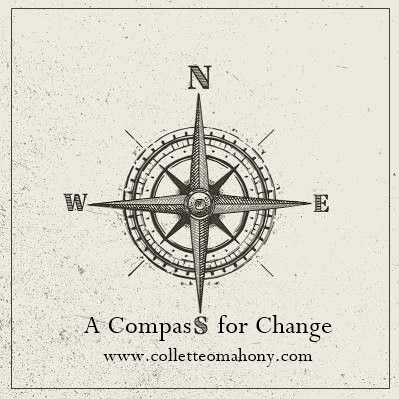
Our initial response to enforced change is often resistance. This is understandable given how the subconscious operates. It takes longer for our subconscious mind to accept change, it runs on a conditioned loop compromising of our daily habits and cognitive learning, culminating in repetitive behaviour patterns. When these behaviour patterns are thrown into tumult through an unexpected event, the subconscious mind tries to default to the habitual patterns causing the thinking mind to struggle with the new situation. This is something that those who are bereaved struggle with, particularly in the early stages of grief, the conscious mind has to constantly remind the subconscious that their loved one is no longer with them. It can take several months for the subconscious to acknowledge the death, when it eventually does it reduces mental pressure. This permits normal functioning of the mind to resume and allow time for the bereaved person to process grief. Many bereaved people report feeling lost, confused, forgetful or think they are losing their mind; it could just be that the thinking mind is overloaded with functions that are normally designated to the subconscious. The subconscious will eventually register the change and adapt accordingly, but during the adjustment period there are feeling of loss and grief that require inner attention.
Many people take the view that free will is an illusion, and that our behaviour is governed by forces over which we have no control. Consequently, how we act or react is viewed as predictable or unavoidable. Our behaviour can be predictable, but that doesn’t make it’s inevitable. We can choose how to behave, but this is restricted if we determine we have to behave according to our structural belief system. As individuals we are free to choose our behaviour, we have a choice to act responsibly or irresponsibly.
Collette O’Mahony. 10/02/2024
Excerpt from the guidebook – A Compass for Change.

March 20, 2023
The Language of Dreams
Last night a dream leapt up from my subconscious and forced me to remember that I have dreamed the same dream multiple times. The subconscious is a dangerous place full of hiding places for our fragmented souls and it launches an attack when our conscious mind is sleeping. The insomniac knows this trick and remains on guard throughout the long night. The subconscious is canny, it shows us a flash of a dream, enough for us to recognise it is a frequent visitor but then snatches it away in case our conscious mind goes to work on decoding its language. The language of the subconscious is in dreams and only the life force permeating our finite meanderings can understand its true meaning.
Dreams like water have many fathoms, some skim the surface of our daily lives and others dredge deeply linking us to the unfathomable depths of infinity. There are dreams that are prescient in quality, forewarning us of the path we are about to take and others that excavate our emotional graveyard for buried trauma. Decoding dreams is a tricky business and the truth within them can only be felt, it cannot be told. In a way, dreams transcend death and mortality giving us a glimpse into a world beyond the waking mind and the repetitive noise that creates the rigid corners of our existence. Occasionally, we have a dream that presses a reset button and rids us, albeit temporarily, of our structured thoughts and beliefs. In these enlightened dreams, we can reach back in time to touch the great minds of the past, those unhindered by religion and societal constraints. It offers us a fresh objectivity on life as a whole, steering us past our cornered subjectivity.
We can enter into contemplation, a relaxed open state of mind allowing ideas to germinate and grow, rather than an active thinking mind where constant mental activity leads to a hurried pace within and without. When we are engaged in constant mental activity we enter a treadwheel of finite possibility, when we are in contemplation we are on the precipice of wonder. Contemplation is not mental laziness, it is a state of vibrational activity and offers fertile soil for new ideas. The means by which these new ideas bounce into life is by enthusiastic and creative response.
And so, back to my dream, a tool to circumvent my active thinking mind that is moving along life’s middle lane and missing out on contemplative opportunities. In the dream I am driving a car, an illusion of control, until in a flash I am moved into the passenger seat and trying to steer from the side-lines. I need to indicate and pull off the motorway, it’s time to allow the life force at the core of my being to take the steering wheel from the middle-of-the-road conscious mind. My acquiescence finally allows the dream to decode in my conscious awareness. I am not in control. I am in control. The dichotomy of my existence rests on this axis. The former occurs when I am trying to control my life through active thinking, the latter comes about through contemplative openness. Dreams are powerful communicators from the source of intelligence if only we would allow that source to work through us.
 Photograhic credit: Rekha Garton.
Photograhic credit: Rekha Garton.
January 14, 2023
Time: Friend or Foe?
Time swoops into focus, nudging us with a ticking noise, ‘keep moving’ it says, ‘my survival depends on motion’. The mind, wired like a ticking clock, swings between right and wrong, swayed by excitement and an avalanche of opinions. One day, it’s taking sides in a political debate, the next it’s swallowing every story of the digital age. Pierce through the stories about fractious nations, warring families and rising inflation, climb down from the pendulous left to right motion that is stealing your valuable life.
Solitude is the enemy of time sitting still among the swirling edifice and finding the eye of the storm where sanity prevails. Seek nature, walk in the forest, climb a hill for the views, in ten years, even twenty, these are the shining moments of joy that decorate our lives. Daily news stories that readership devours will be assigned to the scrapheap of our minds. Every step we take in nature reduces this mind-fill and allows us to live life on our terms rather than become fodder for the beast. In fifty or even a hundred year’s time no one will remember the irrelevance of commentary on insignificant stories, only facts will remain. Put down the phone, turn off the TV, step outside and take a deep breath. This is truth. We need air. We don’t need a constant drip feed from media outlets. Breath connects us with something greater than the news channels and apps that decorate our phone screen, it provides us with life. No one, ever, reached to check the latest news story when they were choking or in cardiac arrest. Breath is all important.
Every country has their headlines, every social network drowns in opinion swaying from left to right, we want free speech but only on our terms shouting down those who disagree. The online platform allows us to hide behind its shield and let our fingers do the talking. If we enter the slipstream of time and motion caused by outer phenomena we are in a state of reaction, positive action comes when we act from a place of stillness within.
Time moves at a speed corresponding to our mental activity. Slow the mind and time expands, fill the mind with news threads and we find ourselves swinging mercilessly upon the pendulum of time. If we wonder where the year has disappeared to, then we have consigned much of it to the scrapheap of our minds. If we can look back on the year and pick out several cherished moments, we have brought some balance to our lives. If, however, we sit in this moment neither looking backward or forward, we have achieved the magic moment that always exists, taking us beyond the boundaries of time into the very existence that pervades all life on earth and the universe.
Collette O’Mahony
January 2023
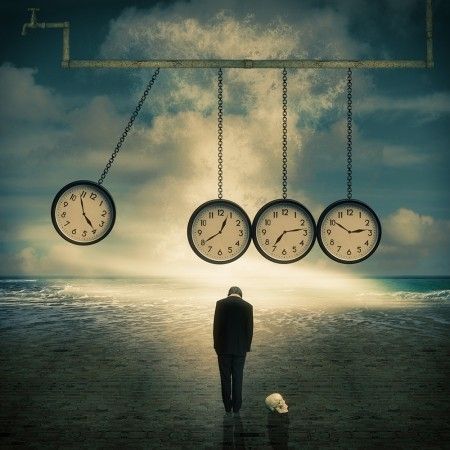 Perpetuum Mobile by Matjaz Jerman
Perpetuum Mobile by Matjaz Jerman
May 24, 2022
Nomadic Gene.
The nomadic heart feels confined in a world of borders. Nomads are a direct lineage from the ancient Hunter-Gatherer tribes that once colonised the earth. The nomadic gene lives on in the heart of anyone who loves to travel and dreams of far off places. The explorer, the tourist, the writer and anyone who saves the Travel section of their newspaper, share a wandering gene that strains to visit foreign lands and see sunsets on new horizons. While we have settled into generations of permanence in the form of walls, windows and doors, there is always a part of us that gazes at the stars and dreams of faraway places.
Contentment is a word often associated with security and belonging, it’s a feeling of knowing and understanding your environment. When contentment nudges into boredom it becomes predictability and wants to stray across the fence to a world without borders. The Hunter-Gatherer gene survives in us because evolution takes millions of years and we, in evolutionary terms, are the grandchildren of the nomadic races that once roamed the earth. Nomadic tribes vigorously embrace mobility, the right to roam without constraints of political borders. The senses not the clock, the sky not the roof, and travel not history were the tenets of nomadic life.
Climate change, drought and famine caused Hunter-Gatherers to trans migrate, seeking better conditions in new lands. Many Hunter-Gatherer traits survive in our nomadic gene, however, they are linked to emotional response to an environment rather than if there is a bountiful berry crop. In a world where ideas and thoughts are pooled into one giant watering hole, the internet, there is a worry that we will become complacent and cease to use the nomadic gene that propels us to new experiences and heightened sensation in our natural world. New ideas arise from change. Drinking from stagnant waters causes malignancy. Evolution springs from new waters, out of the need to change. New ideas leading to shifts in consciousness arise from a mind that is not corralled by habit and predictability. Enjoy your house, your settled life and all that comes with it, but every now and again embrace your nomadic gene and live life on the hoof.
My new novel ‘Beyond the Two Doors’ is a modern-day story intertwined with stories from the Celts of Britain and Ireland, and the Scythian tribes of the European Steppes. Available worldwide on Amazon.
Collette O’Mahony 24/05/2022
 Beyond The Two Doors is available worldwide on Amazon.
Beyond The Two Doors is available worldwide on Amazon.
May 14, 2022
The May Queen
An extract from my novel Beyond The Two Doors
The tradition of May Day celebrations stretched back several centuries at the Maybury Estate. Every year, the parkland was transformed into a child’s paradise with colourful stalls selling candy-floss, ice-creams, candy sticks and lemonade. A merry-go-round, swing-boat and donkey rides all had queues of children waiting a turn. In the centre of it all, there stood a giant maypole.
In the evening, there was a procession, lit by lanterns, leading to a ring fort where once stood a stone circle. A few stones remained with the rest pilfered long ago. Local folklore said it had been the site of a great battle between the Celts and the Romans. The May Queen resplendent in a golden gown wore a headdress made of newly unfurled leaves. She made her way to the hill fort just before sunset to reclaim her throne from the Old Man of Winter.
Clara arrived just as the pageant was about to begin. Low clouds covered up the evening sun and lanterns lining the path of the procession seemed to glow brighter. A hush descended on the crowd as the May Queen emerged from her horse-drawn carriage. Local children dressed as wood nymphs scattered leaves and petals in her wake. Squeals of delight pierced the hushed atmosphere as young and old alike delighted in the spectacle. The May Queen led the procession to the hill fort as the crowd pressed forward to watch the combat between winter and summer.
The Old Man of Winter emerged like Pan from a copse of trees, dancing around the remaining standing stones, claiming all the seasons for himself. There were gasps from the crowd and children held their breath, hoping the fairy princess would not die. Old Man Winter reached a large wooden throne decorated with garlands just as the May Queen climbed to the top of the fort. A fire eater danced around them, adding to the drama and spectacle. He blew fire above their heads as they locked arms in a battle for the Throne of Summer. A troop of dancers emerged from the copse, breaking into two groups to represent summer and winter. They joined in the mock battle for the throne until finally a crescendo of music saw the Old Man of Winter fall to his knees and renounce the throne. The May Queen took her rightful place on the Throne of Summer amid much applause and shouting. And just as she seated herself on the throne, the setting sun broke through clouds as if nature itself had liberated summer from the grip of winter.
An extract from Chapter 15 of Beyond The Two Doors.
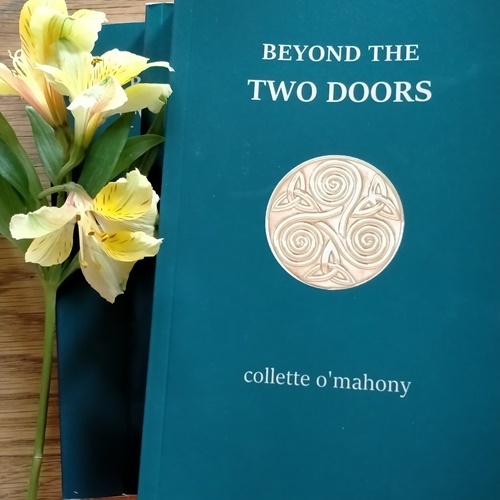 Click on photo for link to bookshelf on Amazon.com
Click on photo for link to bookshelf on Amazon.com

